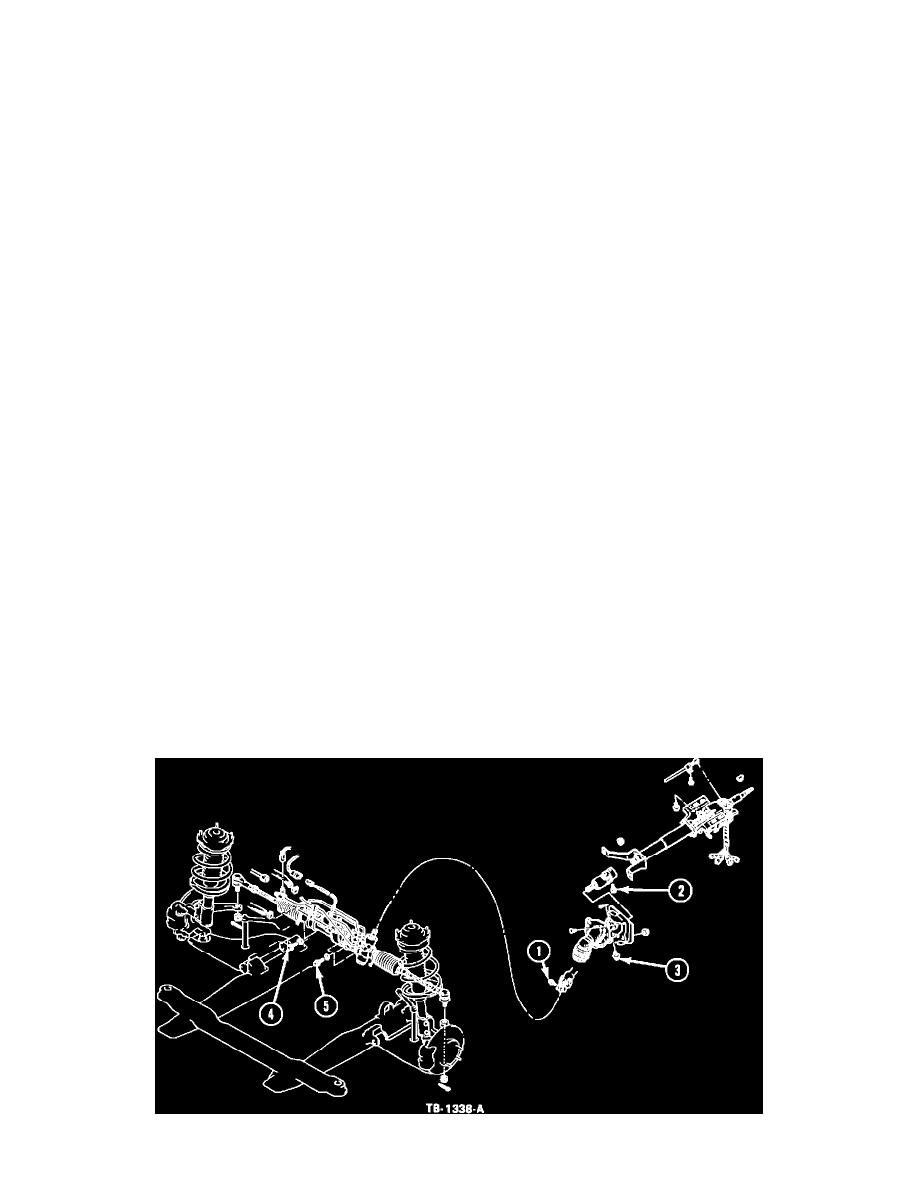Probe L4-133 2.2L SOHC Turbo (1989)

Steering Control Module: Customer Interest
Steering - Higher Than Normal Steering Efforts
Article No. 90-6-4
STEERING - HIGHER - THAN - NORMAL STEERING EFFORT - DIAGNOSTIC PROCEDURE - GT MODELS
FORD:
1989 PROBE
ISSUE:
Higher than normal steering efforts may sometimes be experienced under the following conditions.
^
During low ambient temperatures
^
After a rapid deceleration, such as exiting from a highway
^
Unequal steering assistance while making left or right turns.
ACTION:
Use the following service procedure to identify and correct higher than normal steering efforts.
NOTE: DIAGNOSTIC SERVICE TIPS FOR IDENTIFYING THESE INCREASED STEERING EFFORTS ARE AVAILABLE. BEFORE
ATTEMPTING ANY ADJUSTMENTS OR REPAIRS, REFER TO THE 1989 PROBE SHOP MANUAL, SECTION 13-46.
1. Refer to the 1989 Probe Shop Manual, Section 13-46 for the steering system diagnosis and testing procedures. If a pass code is received during the
testing, proceed to Step 2.
2. Increased steering efforts during low ambient temperatures can be the the result of high viscosity power steering fluid. The reaction chambers,
solenoid and orifice cannot supply sufficient fluid volume for normal power assist.
If the steering system has this condition, replace the steering gear assembly. The new gear assembly (E92Z-3504-E) contains revised internal
components. Refer to the 1989 Probe Shop Manual, Section 13-46 for service details.
3. Increased steering efforts after rapid deceleration from highway speeds of 55-65 mph and then turning can be caused by slow reaction of the
electronic controller to switch from low assist to high assist.
If this condition occurs, replace the electronic controller (FO2Z-3F721-A). Refer to the 1989 Probe Shop Manual, Page 13-01-3 for location.
4. Unequal steering assistance in either direction can be caused by:
^
Binding in the steering column.
^
Improper alignment of the steering gear.
Figure 1
